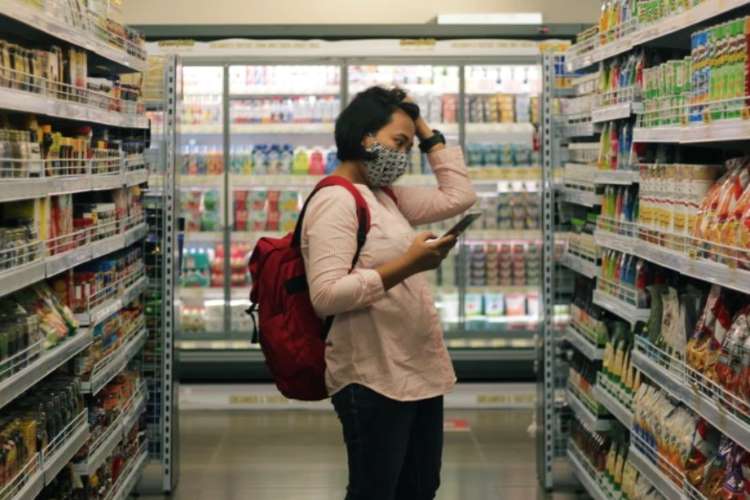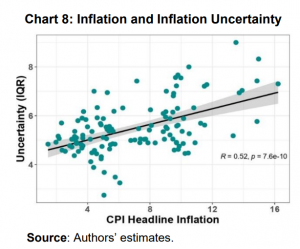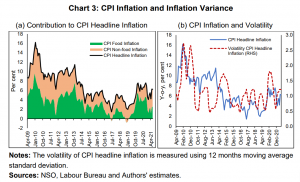
India’s retail inflation rate fell for the third month in a row in December and now stands at 5.72%. This is also the second straight month in which inflation stayed below RBI’s upper tolerance limit of 6%. More importantly, December recorded the lowest print of consumer price index since December 2021. A paper published by the Reserve Bank of India says there is a need to study of asymmetrical distribution of inflation, especially during the period of uncertainties. This, in addition to forecasting movements, will ensure a more effective monetary policy narrative, it says.
The discussion paper says the upside risk to the consumer price index (CPI) inflation is higher than the downside risk. In India, the CPI is significantly affected by volatility in food prices and global oil price shocks. The inflation trajectory is extremely difficult to predict at the times of global crises such as the global economic meltdown of 2008 or the more recent coronavirus pandemic. The uncertainties surrounding global markets mainly contribute to this.
READ | Global recession is perilously close, says World Bank
At times like these, the government and policymakers can be benefited by the distribution of future inflation and inflation forecast, especially when one has a flexible inflation targeting framework. India adopted a flexible inflation targeting scheme in 2016 and since then, the tail risks to inflation i.e., the upside and downside risks to CPI have moderated.
Inflation and inflation uncertainty

The conventional approach is of symmetric distribution of inflation which may not always hold true. This can be better understood with the example of food prices as food is a major component of CPI basket in the country. Food typically faces higher volatility due to supply side issues as well as dependence of Indian farmers on monsoon for healthy crops. The same is also the case with crude oil and any change in global prices reflects on India inflation.
CPI inflation and inflation variance

So, any disruption in weather patterns gets reflected in production, and in turn, also affects prices. According to the paper, in such times of uncertainty, along with the mean path of future inflation, the distribution of inflation is an important tool to assess inflationary conditions. The inflation distribution may help in a proper assessment of the upside and downside risks to inflation.
The study also showed that an increase in household inflation expectations, domestic real GDP growth and global non-fuel price inflation uniformly cause higher upside risks to inflation. Meanwhile, in the FIT period, upside risks to CPI headline inflation have declined to a level of 6.5% from a double-digit level preceding it and have remained stable.
Inflation outlook
Currently, the RBI has an inflation target of 4% with a band of 2% on either side of the target, giving the apex bank room to accommodate economic growth and inflation control objectives. Inflation has been on a declining trend for the last two months owing to softening food prices. Food inflation eased to 4.19% from 4.67% in the previous month. Food inflation is expected to remain subdued in the coming months ahead too thanks to healthy winter harvest so far.
While some components of food such as cereals, milk and spices etc. may remain on the higher side, food inflation may remain below 6% in the coming months. Even then, China’s reopening could be an upside risk to global commodities, and other near-term pressures may also arise from imported inflation through uncertain FX and from sticky services inflation.
RBI’s Monetary Policy Committee takes into account retail inflation numbers for setting repo rates. The RBI has raised interest rates by 225 basis points, including a 35 basis points hike last month to keep inflation in control taking cue from other central banks.

